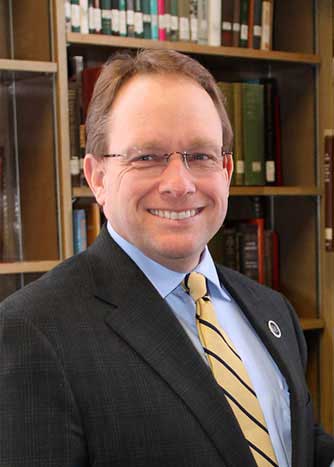Story by Lindsey Coleman, Staff writer
A bill proposing the performance-based funding metrics for secondary education funding has been filed and was introduced in the Kentucky Senate Feb. 10.
In December 2016, a postsecondary education work group met to recommend metrics for the funding model. President Bob Davies said the work group was comprised of some of Gov. Matt Bevin’s staff, Sen. David Givens, Rep. Arnold Simpson and public institution presidents, including Davies himself.
The metrics take student success, course completion and operational support into consideration.
Davies said the bill reflects very closely what the work group put forth in December.
“The model itself is, like many types of things that go through this process, made up of a series of compromises,” Davies said. “Is it ideal and perfect for Murray State? No. Does the model hurt Murray State? No, it does not.”
He said the aspect of the model that equalizes the playing field is funding is based on how universities improve over a three-year rolling average.
“It makes for a longer term approach versus a short term gain,” Davies said.
For every university across the board, Davies said the goal of the model is to increase retention and progression of students towards earning their bachelor degrees, increase degrees that support necessary STEM+H (science, technology, engineering, mathematics and health) jobs for the Kentucky economy and close achievement gaps in degrees of underrepresented and underprepared students.
“When we look at Murray State, it’s how do you recruit, retain and move students to graduation,” Davies said.
Fred Dietz, associate vice president of enrollment management, said the model works in Murray State’s favor.
“I think the funding model could be a catalyst to grow enrollment,” Dietz said. “The challenge will be to have good representation from STEM, non-STEM, first generation and low income students.”
The funding model will be used to distribute 5 percent of Murray State’s state appropriation funding beginning in the coming fiscal year.
ASPECTS OF THE MODEL
Three areas are taken into consideration: 35 percent student success, 35 percent course completion and 30 percent operational support. All metrics are based on bachelor degrees.
Students’ success measures how students are doing. The overall number of bachelor degrees earned plus the number of degrees earned by low income, STEM+H or underrepresented students is considered.
Another aspect of student success is the progression of students through their degree requirements. When students earn 30, 60 and 90 credit hours, the university receives points.
Course completion addresses how many credits are earned and how many students pass classes. Courses are weighted based on their discipline and cost to produce the class. Davies said 400-level classes are weighted differently than 100-level classes, for example.
Davies said integrity and ethics will be maintained. Pressure will not be put on teachers to push borderline students up to passing grades.
Operational support for the institution measures where money is spent on resources. This is based on maintenance and operation of academic facilities, student support functions and academic support functions.
“The goal is to have support systems in place to ensure that students will be successful,” said Adrienne King, vice president of university advancement.
The model will be reviewed every three years, and Davies said recommendations will be made for improvement, which will ensure the model can change and benefit universities.
“Slow and steady is going to win the race,” Davies said. “If we stick to the strategies that we have in place, we stick to our values and our core assumptions of what an undergraduate degree is about, we’re going to be fine.”
When looking at the fundamentals of Murray State, Davies said the university is extremely well-positioned for the process.
SUPPORT FOR THE ARTS
Although the model heavily supports STEM+H degrees, Davies said the Murray State administration will not abandon the liberal arts mission.
“If we abandon that philosophy of teaching the whole person, the brand of Murray State would diminish, we would not be able to attract the top students and we would also see a decline because our graduates are extremely well-sought after for employment, and that enhances the value of Murray State,” Davies said.
Not only because of the new model, but in being an efficient and effective university, Davies said Murray State administrators need to make sure all programs have a pathway for a degree in four years, while making sure they’re focused on the ability of students to leave Murray State well and broadly educated. Although Davies said a depth of knowledge in a certain discipline is important, having a breadth of learning to help students adapt and change is vital, as well.
Jeff Osborne, associate professor of English, said the arts are worth preserving at Murray State.
“I think that Murray State has an opportunity to be seen as the public university of choice for students who want to get an education in the humanities,” Osborne said.
Whether students major in humanities or not, Osborne said the skills students acquire in humanities classes are important to make them more successful employees and more productive members of the world they live in.
“People who major in humanities and have to deal with imaginative texts like literature or who have to wade through a lot of archival material to figure out what’s happening at a particular moment in history, those create people who are more careful thinkers and communicators,” Osborne said.


























































































